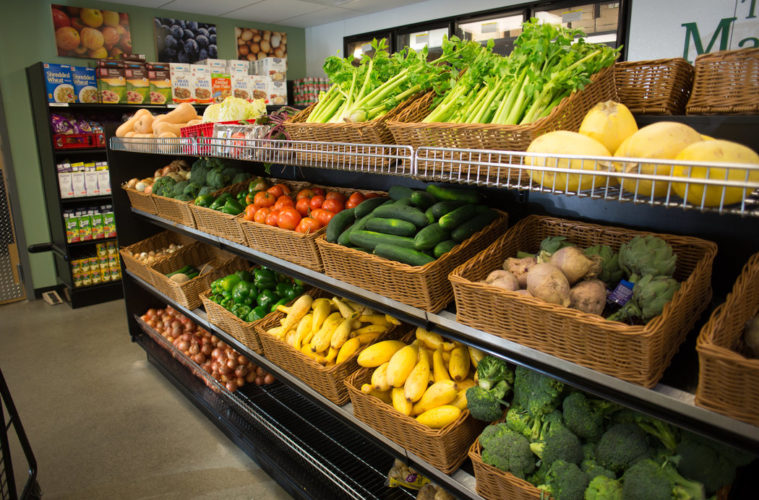Lyndsey Haight knows a woman who had a terrible decision to make about how to spend the last three dollars in her pocket.
“She could either put gas in her car to get to work, or she could go to the drive-through and get her kids dinner,” Haight says.
Instead, this brave woman chose a third option: She got help from Our Neighbor’s Table, a nonprofit organization that provides dignified food assistance to twelve communities in northeast Essex County. Instead of opting for the drive through, she turned to one of Our Neighbor’s Table’s grocery programs, where she was able to stock up on fresh produce, meats, and other healthy foods for herself and her kids.
“Our Neighbor’s Table is a community-based organization ensuring that all of our community members have access to fresh, nutritious food when and where they need it,” says Haight, who’s the executive director at the Amesbury-based organization.
Since it started in 1992, Our Neighbor’s Table has expanded to include no-cost grocery markets, grocery delivery and distribution services, a weekly hot community meal, summer lunch programs for school-aged kids, holiday programs, emergency food assistance, a SNAP food stamp clinic, and more.
Its programs are carried out mostly by volunteers who cook and serve meals, stock markets, and go out and get food from sources like the Greater Boston Food Bank; local retail and food rescue partners; and more than 36 local growers.
“We really do it by building a community around the issue of food access,” Haight says, adding that the programs are varied to provide the kind of assistance that’s specific to many different needs.
“It’s really creating programs that reflect the needs of the community,” she says.
Unlike typical food banks that often ration food, guests at Our Neighbor’s Table are free to take whatever they need for their families. Another key difference is Our Neighbor’s Table’s emphasis on fresh food, like fresh fruits, vegetables, dairy, and meats, rather than boxed or canned goods.
“Our fresh foods take front and center,” Haight says. “We make sure that, first and foremost, we’re filled with those fresh food items that people really need.”
The programs are open to anyone living in the 12 communities Our Neighbor’s Table serves: Amesbury, Boxford, Byfield, Georgetown, Groveland, Merrimac, Newbury, Newburyport, Rowley, Salisbury, West Newbury, and South Hampton, New Hampshire.
While these cities and towns aren’t ones that people typically associate with food insecurity—which is defined as lacking reliable access to enough affordable, nutritious food—the needs there are great. In those communities, one out of every five seniors and one out of eight kids is food insecure, and the community with the most food insecure people—an estimated 1,500 people—is Newburyport, according to Haight.
“I think there’s always that temptation to perpetuate this picture of homeless people living on the streets or that small child in tattered clothing, and the sense of ‘someone else,'” Haight says. While homelessness is a problem, it’s far from the only path to food insecurity. In fact, huge numbers of Our Neighbor’s Table’s guests work full time, but don’t have enough money to make ends meet in an area where the cost of living is so high.
“It’s incredibly difficult for anyone to reach out and ask for help. We hear all the time from guests who say they have done anything and everything to avoid coming to Our Neighbor’s Table,” Haight says. “How embarrassed and shameful they feel to have to ask for help. We really admire the courage that it takes.”
That’s why Our Neighbor’s Table is also fighting to remove the stigma around needing food assistance and is working to make the experience of using the programs friendly, beautiful, and dignified.
“We have created a place where people feel safe, accepted, and can hold their head high,” Haight says. “We’ve given the power back to someone who has had that power stripped away from them in so many ways.”
For more information, visit ourneighborstable.org.

